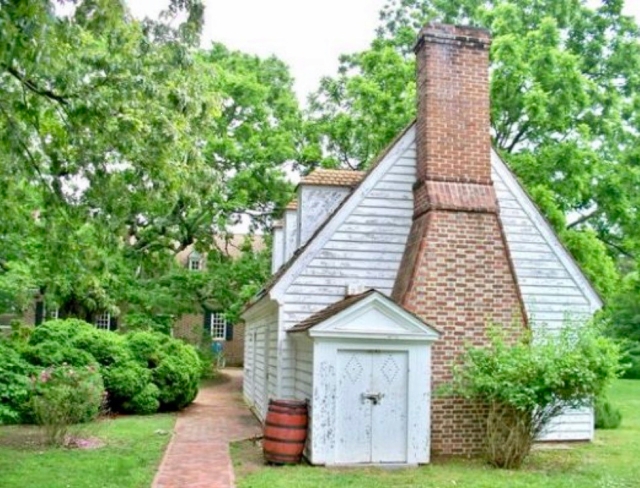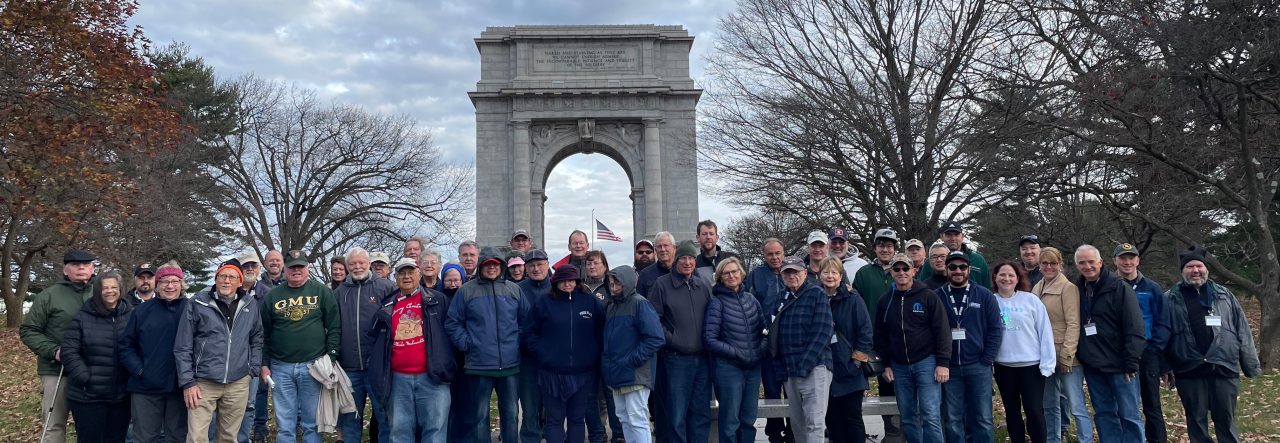Not long ago, I had the pleasure of accompanying our group of student interns from Richmond National Battlefield Park on a short field trip to the George Washington Birthplace National Monument (GWBNM), in Westmoreland County on Virginia’s famed Northern Neck. First established near Pope’s Creek by John Washington, great-grandfather of our future first president, it was, as the name implies, the site of George Washington’s birth on February 22, 1732. This much we know.

The grounds were designated a United States National Landmark in 1930 and deeded to the Federal government. In honor of George Washington, the current Memorial House was constructed at the site in 1931. Along with the house, visitors can find a colonial-style kitchen building and blacksmith’s shop. Costumed interpreters also manage the Colonial Living Farm with barn, pastures and livestock. The site depicts life on a middling-sized Virginia tobacco plantation during the mid-18th Century.

The site was selected as the location for our field trip to provide the interns with a contrasting view on how other types of National Parks are interpreted; being completely different than the interpretation of our own American Civil War sites in and around the Richmond, Virginia area.

The establishment of the GWBNM was different in that it did not precisely follow what we would consider the modern cycle of historical research, construction, preservation and interpretation. The Memorial House, for example, was constructed somewhat in a rush in the early years of the Great Depression in order to become part of the effort to honor Washington in time for the bicentennial of his birth in 1932. The building, therefore, was erected before the actual house site could be ascertained via a thorough archeological ground study. Ironically, in the years that followed, ruins were discovered nearby on the site that for many years were thought to be the foundation of the actual birth house. Only recently have Park historians, upon closer study of the ruins, begun to doubt the earlier conclusion. Likewise, artifacts discovered in another area on the site may prove to be the actual location of the birth house.

The Memorial House is not a replica of what once stood here at Pope’s Creek. Rather, it was built in the style of other homes typical of the area at the time. Most of the furnishings in the house are period pieces but were not owned by the Washington family. The original house, enlarged over the years and named Wakefield, burned to the ground on Christmas Day 1779.
Near the house is the Washington family burial site. In the early 20th century, members of a group known as the Wakefield Memorial Association, the prior owners of the land, tried its hand at preserving the site. Unfortunately in this effort, the remains of Washington’s forebears, including those of his father Augustine Washington, were collected from their original graves and laid to rest together in a single, central vault. Concrete grave makers were placed on the site which was enclosed by a 1930s-era brick wall. Another example of early preservation efforts we, as modern historians, would never consider.

Today, park staff members face the challenge of taking the earlier efforts in stride as they continue their modern research and put forth a more informed and accurate history of the site. Additionally, unlike our Richmond sites, the GWBNM includes a level of land management that involves the care and upkeep of sheep, cattle, horses and other livestock. Park staff members are trained in this husbandry which can present its own unique set of challenges not faced by staff at other parks. Over the years, with modern efforts at research, the park has proven adept in changing and updating its interpretation. The George Washington Birthplace National Monument presents a clear illustration of what some current National Park and privately owned park staff routinely face, and that is the challenge of inheriting the preservation efforts, such as they are, of earlier historians and pushing forward to not only correct erroneous conclusions but to uncover the true history of the sites.
Although it is set in a beautiful area along Pope’s Creek, the GWBNM is in a fairly rural and out-of-the way location. Visitation tends to be low, in comparison to other well-traveled sites. This begs the question: does the site merit its designation as a national memorial? I think, for most people who visit here, the answer to that question is a resounding “Yes”. For George Washington, first in war, first in peace, first in the hearts of his countrymen, life began here. His ancestors are buried here, in this soil. When he was 16 years-old, George Washington stood here for the final time, at his father’s grave. From this point forward, the young man’s life took off in ways even he dared not dream. His roots are here. This much we know.


Good article. Enjoyed it. Thanks
LikeLike
You are very tolerant as you describe how this site and the remains of George Washington’s family were handled.I would probably have used some impolite language.
LikeLike
It is very crucial to understand that George Washington Birthplace National Monument tells multiple stories and one is the Colonial Revival movement of the early 20th century. The site provides one of the best examples of how Americans wanted to glorify the live of George Washington and his contemporaries in the Roaring Twenties. Middle class Americans for the first time had money to burn, vacation time, and cars that made travel viable. They were largely uninterested in accuracy and more focused on the mythic, entertaining, and romanticized stories of the nation’s founding. Thus, parks, museums, amusement parks, dance halls, movie theaters, and other places that were created in that era were places of escapism. Even when the Depression started, the places, like George Washington Birthplace National Monument, flourished because the people wanted escapism more than academics.
LikeLike
An interesting sort of park. But I have to wonder what people a couple generations from now will think about our historical interpretations and preservation efforts 🙂
LikeLike